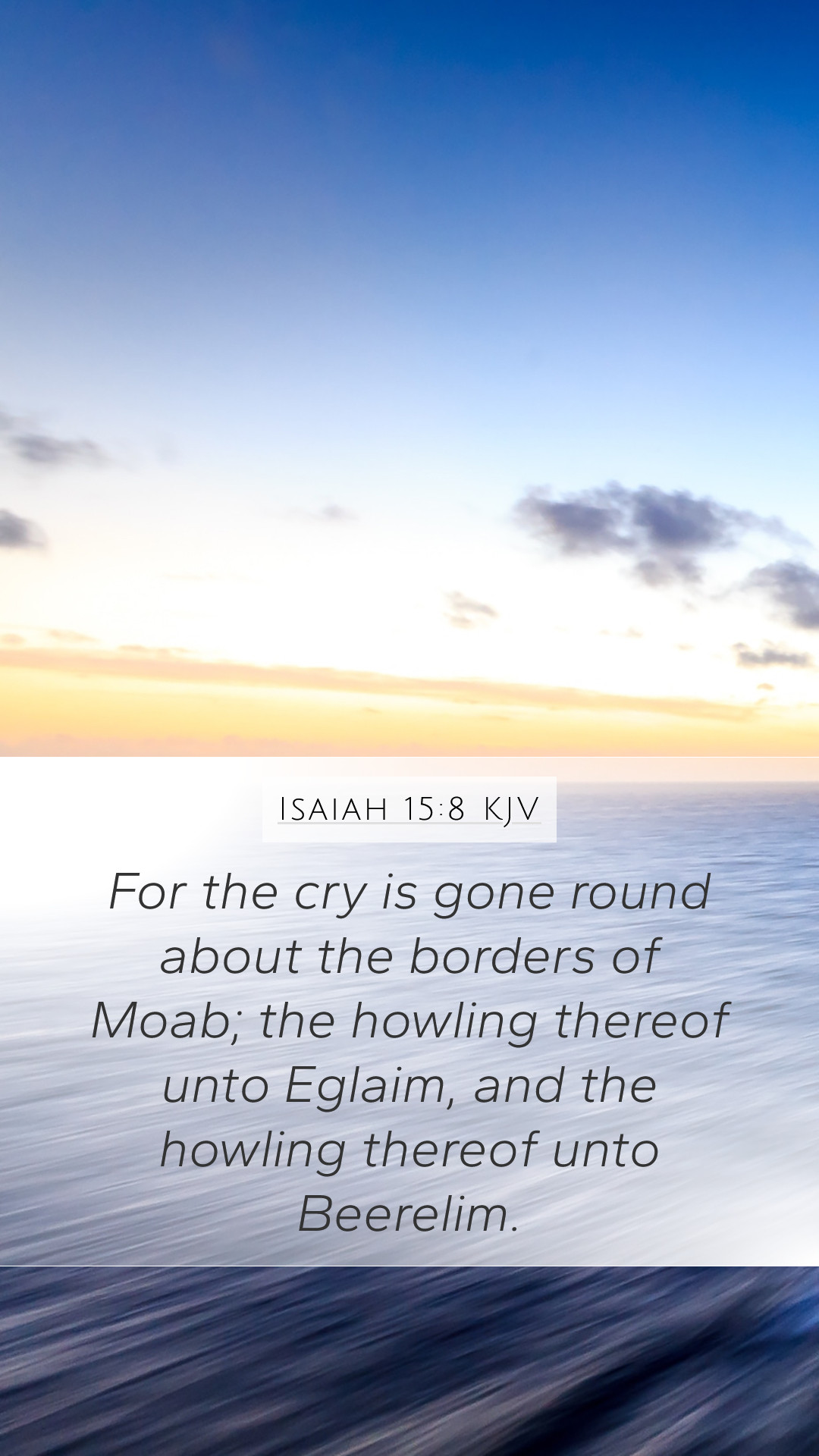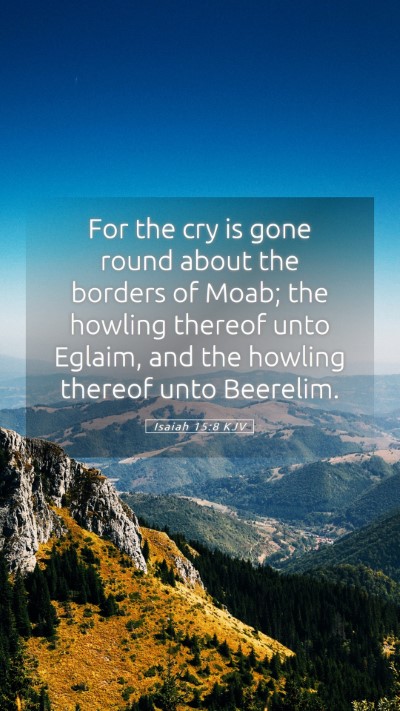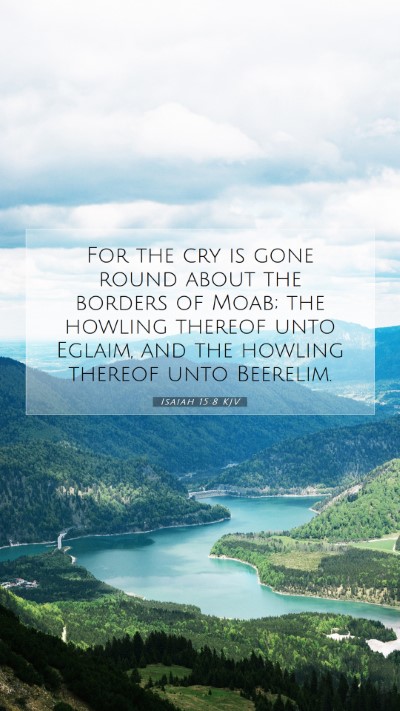Understanding Isaiah 15:8
In this analysis, we explore Isaiah 15:8 and its implications through the lens of various public domain commentaries. By examining this verse, we seek to provide a comprehensive perspective on its meaning, significance, and practical application in the lives of believers. This effort is aimed at those seeking deeper understanding of Scripture through scholarly insights, study tools, and commentaries.
Verse Content
“For the cry is gone round about the borders of Moab; the howling thereof unto Eglaim, and the howling thereof unto Beerelim.” - Isaiah 15:8
Verse Meaning and Context
Isaiah 15:8 is part of the prophecy against Moab, a neighboring nation that often represents the enemies of Israel. This verse indicates the widespread mourning and cries of despair echoed throughout the region. The historical context is crucial to understanding its significance—Moab was experiencing devastating consequences due to divine judgment.
Insights from Commentaries
- Matthew Henry: Henry emphasizes the profound sorrow of the Moabites, indicating that their lamentation reaches nearly every corner of the land. Their cries reflect divine retribution and highlight the inevitable judgment that accompanies idolatry and rebellion against God.
- Albert Barnes: Barnes points out that the enumeration of Eglaim and Beerelim signifies specific locations that experienced devastation, illustrating the full extent of Moab’s suffering. He interprets this as a warning to Israel, showcasing God’s sovereignty in punishing those who oppose Him.
- Adam Clarke: Clarke elaborates on the terms used in the verse, noting that "howling" implies a deep, anguished mourning. He connects this to the broader theme within Isaiah regarding the consequences of turning away from God’s commandments, serving as both a historical account and a moral lesson.
Key Themes
From the verse and surrounding context, several key themes emerge:
- The Reality of Divine Judgment: The cries of Moab illustrate the harsh reality of God’s judgment on nations that reject Him.
- The Ubiquity of Suffering: The mention of different locales underlines the pervasive nature of suffering resulting from sin.
- A Call to Reflection: This verse serves as an admonition to Israel, prompting a reflection on their own faithfulness to God amidst the downfall of a neighboring nation.
Applications to Daily Life
Understanding Isaiah 15:8 can enrich Bible study lessons and enhance personal reflection:
- Awareness of Consequences: The verse reminds believers that choices have consequences, both individually and collectively.
- Encouragement to Seek God: In times of personal or communal distress, turning to God is essential for healing and restoration.
- Community in Mourning: Recognizing the shared nature of grief can foster community support, mirroring the howling of Moab.
Related Bible Cross References
This verse connects deeply with several other Scripture references:
- Isaiah 15:5 - Descriptive prophecy regarding Moab’s distress.
- Jeremiah 48:31 - A similar lament for Moab and its fate.
- Ezekiel 25:8-11 - Prophecies concerning the fate of Moab as a nation.
Conclusion
Isaiah 15:8 serves as a poignant reminder of the effects of sin and the reality of divine judgment. Through the insights from various public domain commentaries, believers can gain a richer Bible verse understanding and be equipped with practical lessons for today. As we engage with these texts, let us reflect on our own lives and strive to align our actions with God’s will, fostering a vibrant relationship with Him.
This exploration of Isaiah 15:8 fits well within Bible study courses and discussions, encouraging group reflection on the weighty themes of judgment, community suffering, and the relentless call to faithfulness.


